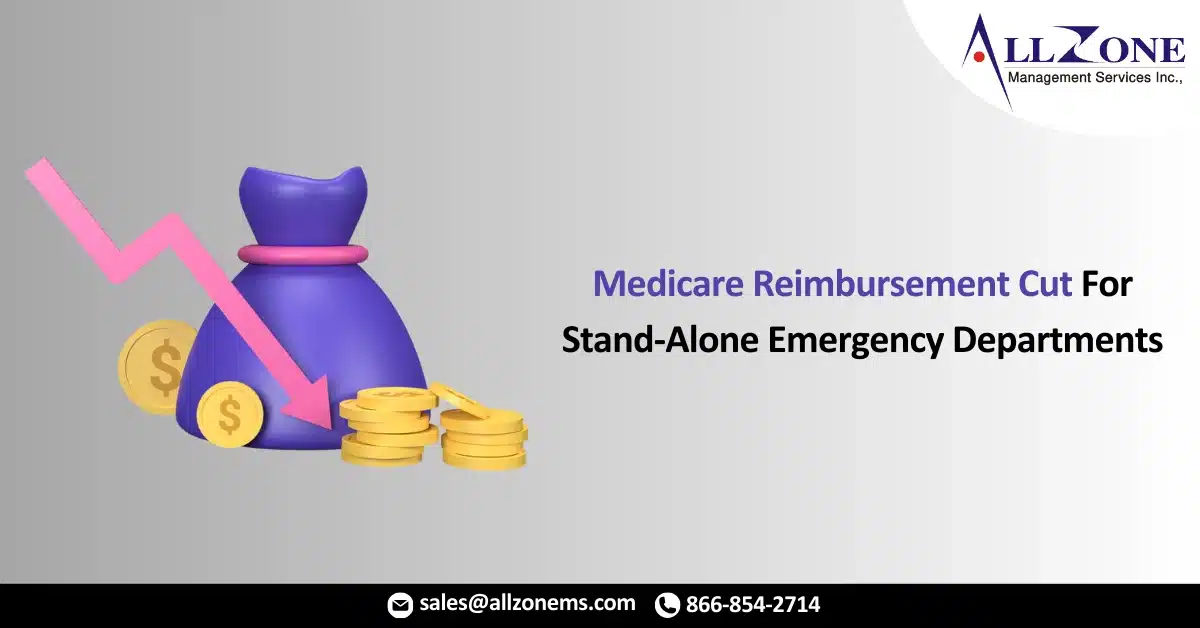Medpac Suggests Cutting Medicare Reimbursement For Stand-alone Emergency Departments
The Medicare Payment Advisory Commission (MedPAC) recently voted to reduce Medicare reimbursement by 30 percent for off-campus stand-alone emergency departments (ED) in urban areas. The recommendation will be included in the commission’s June 2018 report to Congress.
MedPAC expressed concerns that stand-alone EDs in urban areas resulted in overutilization of emergency services. Between 550 and 600 stand-alone EDs are currently open in several states, with most operating since 2010. And about two-thirds of these facilities are hospital-owned off-campus EDs that can bill Medicare for services performed, an analysis of facilities in three states showed.
Since 2010, when most of these stand-alone EDs opened, Medicare outpatient ED use increased. The use of Medicare outpatient ED services rose faster than nationwide ED use and Medicare physician visits, the commission reported.
What’s more is that the two levels of ED visits with the greatest reimbursement rate (levels 4 and 5) also grew as a share of all Medicare visits to the emergency room.
With outpatient ED use increasing, Medicare reimbursement for outpatient ED services increased 72 percent per beneficiary from 2010 to 2016.
Payment incentives under the Medicare reimbursement structure for EDs likely drove the increase in Medicare spending and outpatient ED use, MedPAC suggested. Medicare reimburses EDs using two payment rates. The first rate is for facilities open 24/7 and the second rate, which about 30 percent lower than the first rate, goes to facilities open less than 24/7.
Medicare reimbursement for ED services also hinges on distance. EDs within 35 miles of an affiliated hospital are eligible to bill for the first and higher rate, while facilities over 35 miles away cannot bill Medicare for ED services. These facilities receive Medicare reimbursement under the Physician Fee Schedule.
Stand-alone EDs in urban areas received the higher Medicare reimbursement rate as on-campus EDs despite the freestanding facilities reporting lower costs. MedPAC found that stand-alone EDs had lower patient severity and standby costs than their on-campus peers.
The new Medicare reimbursement policy would decrease Medicare spending and the incentives to create emergency care sites in close proximity to existing EDs. Three-quarters of urban stand-alone EDs were also located within six miles of an on-campus hospital emergency room, MedPAC found.
Not long after MedPAC voted to recommend the ED payment cut on April 5, 2018, the American Hospital Association (AHA) criticized the commission’s decision, reiterating issues with the recommendation that were outlined in an April 2, 2018 letter to MedPAC.
“MedPAC’s recommendation would make the already-record Medicare underpayment of outpatient departments and hospitals even worse,” the industry group wrote. “Outpatient Medicare margins were a record low of negative 14.8 percent in 2016. Overall Medicare margins were a record low of negative 9.6 percent in 2016, with a new record low of negative 11.0 percent projected for 2018.”
“Of note, even efficient hospitals had a negative margin in 2016, for the first time ever. Additional cuts to hospital payments would threaten beneficiary access to these services.”
The AHA also pointed out that MedPAC based its recommendation on limited data. MedPAC only used a small number of stand-alone EDs in three states to draw conclusions.
“While these data provide an interesting perspective of non-Medicare patient care in emergency and urgent care facilities in these states, they are not representative of the nation and contain no Medicare data,” the group wrote.
Colorado and Texas have unique licensure laws for independent freestanding emergency centers, which are not recognized by Medicare as hospitals. EDs in Maryland are also excluded from the Medicare Outpatient Prospective Payment System, the AHA explained.
Until MedPAC can examine additional data, the industry group advised the commission to hold off on recommending the Medicare reimbursement cut.
“We urge the Commission to pause until it is able to examine Medicare claims data specific to stand-alone off-campus EDs (OCEDs),” the group wrote. “Currently, Medicare claims do not distinguish services furnished in OCEDs from those furnished in on-campus EDs. However, we have supported MedPAC’s recommendation that the Centers for Medicare & Medicaid Services (CMS) begin to track OCEDs in the Medicare claims data, provided the mechanism used to do so is not overly costly or burdensome for hospitals to implement.”
For more information: CLICK HERE

